
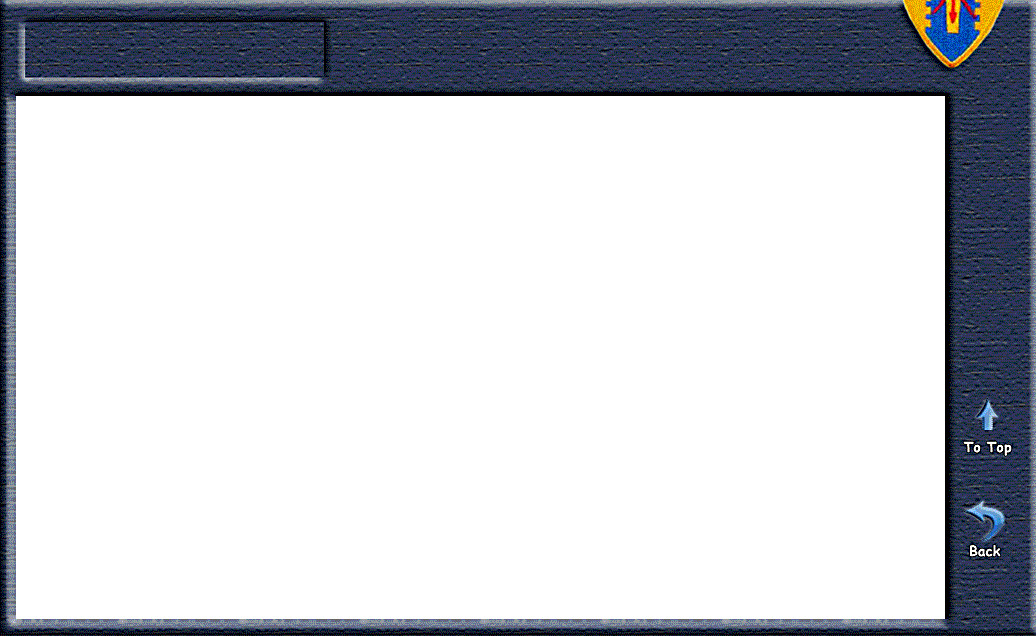
The Second year of the Centaurs - Mar 67 to Mar 68
A Troop Commanders summary of D Troop during the second year of combat and how it changed from the first year.
.....................................................................................................................................................................................
The second year if the Centaurs was distinctly different for the soldiers of D Troop (Air), 3rd Squadron, 4th Cavalry, 25th Infantry Division at Chu Chi than it had been for the troopers of the first year whose stories were told by Carl Burns in “Centaurs in Vietnam: Untold stories of the first year”. The men who were assigned to the unit to serve in early 1967 joined a unit that was established, manned with experienced personnel, fully equipped and in a location that had been refined for over a year.
D Troop (Air) came to Vietnam as a unit fully manned and equipped with new equipment and it had developed unit tactics, techniques and procedures over the first year. There was an infusion of a relatively small number of new aviators in the June, July 1966 time frame from other units in to D Troop and corresponding departure of aviators to other units. Most all of the personnel who arrived in March 1966 departed in March 1967. All of the key positions turned over (CO, XO, Flight Operations Officer, most of the Platoon and Section Leaders and key NCOs)
The helicopters, weapons and vehicles that were new in 1966 were now well worn showing the wear and tear of 12 months of combat. The buildings, bunkers and revetments that had been well constructed soon after the arrival of D Troop were also aging. A sand bag will only last so long in the tropical climate of Vietnam.
By 1967 the pool of experienced Army aviators available for assignment to Vietnam had been nearly exhausted. To meet the need for aviators in Vietnam during 1965 and 1966 the Army had to send every aviator that was available. By 1966 the aviators who had been assigned in the buildup were not ready to come back in any significant numbers for a second tour. What aviators were available in 1967 for assignment to USARV were aviators that held critical positions in the states and overseas. Some were aviation unit commanders, flight school instructors or assigned to Joint Flight Detachments overseas. While experienced aviators were in short supply, newly rated aviators were flowing out of Ft. Rucker in sufficient numbers to fill the seats.
The enlisted positions, that were the engine that made the Centaurs a cohesive fighting unit, experienced much the same personnel challenges as the aviators. The Crew Chief on each of the 28 helicopter was supposed to be in the grade of Specialist 5, a grade that in normal peacetime would take four or more years to attain. All 28 Crew Chiefs were soldiers that had just finished their schooling and were sent immediately to Vietnam. Usually Crew Chiefs spent a few weeks or months in the Service Platoon under the watchful eye of the Maintenance Officer and Technical Inspector before being assigned to a helicopter.
The Door Gunners assigned to the UH-1s were volunteers who had proved themselves in infantry positions in other units or the Aero Rifle Platoon. The remainder of the unit personnel were assigned direct to the unit from their initial entry specialty schooling.
Each person arrived in D Troop (Air), alone, as an individual and settled in to take up his place in a strange country and a unit that they had no experience with or specific training for. In all D Troop (Air) had a total of 220 authorized positions. It never reached full strength due to rotational turnover and shortages of aviation personnel in Vietnam.
The Division Armored Cavalry Squadron: An Air Cavalry Troop along with three Armored Cavalry troops makes up the fighting elements of the Armored Cavalry Reconnaissance Squadron of an Infantry Division. The mission of the division armored cavalry squadron, and its Troops, is to conduct reconnaissance, security and economy of force operations for the unit to which it is assigned or attached. The D Troop (Air) modified TOE was based on that of the Divisional Air Cavalry Troop.
The D Troop (Air) organization contained:
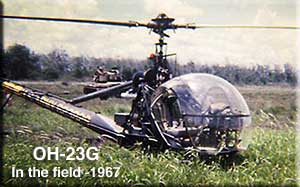 An Aero Scout Platoon made up of 2 light scout sections and a Headquarters utilizing observation helicopters, ( 9 ea OH-23G). Initially these birds flew single pilot with no armament and were mostly used for "Ash and Trash" missions. They were limited to 1500 feet altitude for safety.
An Aero Scout Platoon made up of 2 light scout sections and a Headquarters utilizing observation helicopters, ( 9 ea OH-23G). Initially these birds flew single pilot with no armament and were mostly used for "Ash and Trash" missions. They were limited to 1500 feet altitude for safety.
in September 1967, when I took command, the light scouts armed up (M2 Skid Guns and a Door gunner) and started flying low level scouting. This began a gigantic change in the way we approached scouting.
Two Heavy Scout Sections utilizing armed utility helicopters (8 ea UH-1C with machine guns and rockets). The 4 M60 machine guns of the M16 System (Machine guns and 7 pod rocket launchers) were replaced in July of 1967 with mini guns and renamed the M21 System. The combined weight and aircraft limitations meant that only seven-tube rocket launchers could be used with the M21.
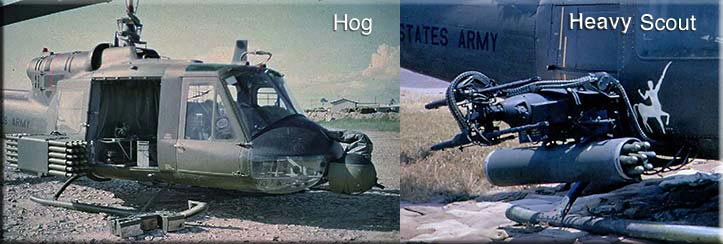
A Heavy Weapons Section utilizing armed utility helicopters (4ea UH-1C with M3, 40 round rocket pods and M5 40mm grenade launcher).
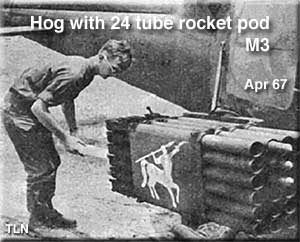

Aero Rifle Platoon with 4 rifle squads and dismounted headquarters element, (5ea UH-1D troop carrying helicopters called "Slicks").
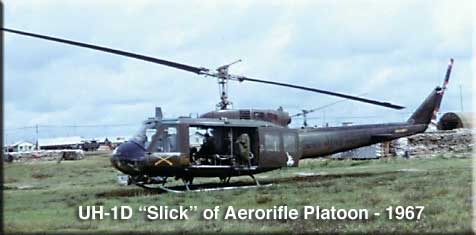
A Service Platoon (with 1 UH-1D) and a Maintenance Section and a Supply Section.
The Troop Headquarters and the Flight Operations Section had 1ea UH-1C for command and control.
A 44 man Long Range Reconnaissance Patrol Platoon was attached to the troop throughout much of 1967. It was disbanded in late 1967 and reorganized as a Long Range Reconnaissance Company. The relationship of the LRRP/LRRC was close and intimate. They were housed with D Troop and employed under the close over watch of D Troop (Air) who provided most of the insertion and extraction of the LRRP teams. In day to day employment of elements of the troop its elements task organized to accomplish what ever mission or missions were assigned.
The need for change in the location of the home of D Troop (Air) was apparent with the lack of maintenance facilities and the need for new billets for the troop and revetments for helicopters which were aging and had been badly beat up in a wind storm in the summer of 1967. The squadron was anxious to have the troop move to a location closer to its headquarters. The squadron commander tasked the squadron XO and the troop service platoon leader with the mission of relocating D Troop (Air) to a location adjacent to the remainder of the squadron.
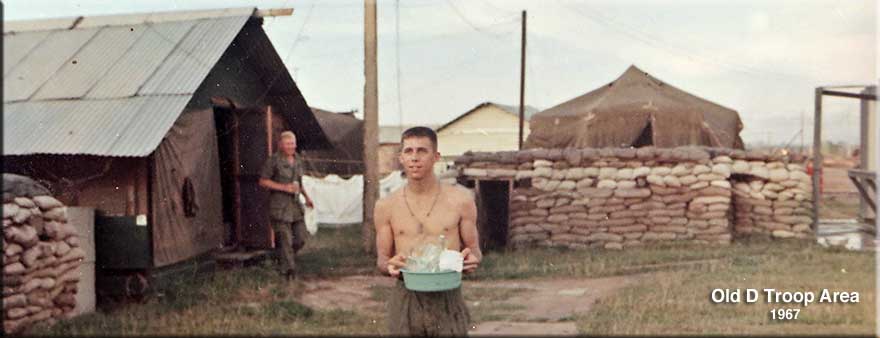
The planning and construction took place from August through December of 1967. Due to the fact that D Troop (Air) was the only company size aviation unit at Chu Chi still maintaining its helicopters out in the weather, without overhead cover, it was allocated the first real hanger constructed at Chu Chi. It was to be built in the south east corner of the airfield.
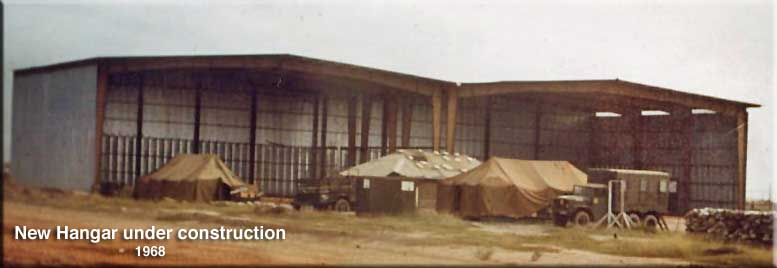
The troop physically moved into a nearly complete base of operations across the perimeter road from the remainder of the squadron in January 1968 and shortly had all the facilities it needed to secure, operate, maintain its equipment, house and care for its personnel.

Other changes were coming in the last three months of the second year. The OH-23Gs which had served the light scouts so very well for the first two years became armed with skid mounted M60 Machine gun and crew chief/door gunner with m60 machine gun in September. By the end of the second year the OH-23Gs were thoroughly worn out and started to be replace on a one for one basis through the last two months of the second year by the new OH-6A. The new AH-1Gs started to flow in to the 25th Infantry Division and D Troop managed to get six at the begining of the third year replacing some of the worn out UH-1C gunships.
The troopers who served in the 1967 -68 time frame were blessed to have a foundation in place upon which to operate and carry forward the Centaur spirit. Young commissioned officers and newly minted warrant officers along with young inexperienced crew members and service personnel picked up where their experienced predecessors left off and carried on with selfless enthusiasm and dedication. Combat is never precise. It is confusing, freighening, deadly and often boring and mundane.
As you read the stories presented throughout this web site it is hoped you will recognize a theme of selflessness, a sense of duty, and a responsibility to and for each other. As in every unit there are unsung heroes. Those are the soldiers who kept the generators running, cooked the meals, drove the trucks, maintained the helicopters, radios and weapons and supplied everyone with cloths boots, ammo, fuel and the necessities of life. Every soldier recognized that the fate of the troop in every engagement was dependent on them doing their job to the best of their ability every day and night of their assignment. This universal feeling enabled the Centaurs to exceed the expectation of every unit they supported, saved many lives and enabled each individual to take with him the feeling that he served with the best soldiers in the Army.
For most Centaurs this period was a seminal experience and the defining hallmark of their military service.
Tom Fleming